CAPERÇAILLIE:
SCOTLAND IN ARMS (MUSICALLY SPEAKING)
By: Víctor Arenas.
![]()
Look to the past and learn. This is how Capèrçaillie have become what they are. They are such an original band that it's not worth classifying them.
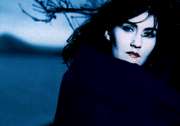 Their first true
success was a theme more than four hundred years old: here is
where the essence of this sensational Scottish band resides, the
best of the new and the old, wisely intertwined. Their origin
will probably advise us to label their music as Celtic, yet this
might perhaps be unfair, as ever since that "Coisich a
ruin" enough time has gone by as to allow the evolution
experienced by Capèrçaillie to
abolish all the barriers.
Their first true
success was a theme more than four hundred years old: here is
where the essence of this sensational Scottish band resides, the
best of the new and the old, wisely intertwined. Their origin
will probably advise us to label their music as Celtic, yet this
might perhaps be unfair, as ever since that "Coisich a
ruin" enough time has gone by as to allow the evolution
experienced by Capèrçaillie to
abolish all the barriers.
Before these perspectives, we must not wonder about their growing, enormous popularity, not only in Scotland, but also in the continent, where the plentiful sales of their records have always astonished everybody. We are, no doubt, before a band that have reached their full maturity, whose records (and above all whose live performances) never cease to amaze us, and who have not even had any imitators whatsoever.
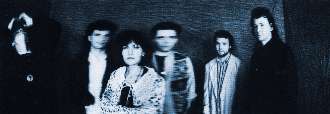 Yet their history comes
from further back in time. The founders of Capèrçaillie,
in fact, six young people full of hope, with a musical horizon
absolutely meridian, had never imagined that they would attain
the heights they have reached now.
Yet their history comes
from further back in time. The founders of Capèrçaillie,
in fact, six young people full of hope, with a musical horizon
absolutely meridian, had never imagined that they would attain
the heights they have reached now.
Karen Matheson (voice) and Donald Shaw (keyboards and accordion) have known each other since their school days (at the Oban High School), and both decided to join their musical interests. She had already done some things before, especially with The Etives. The songs that would fill these first years of the band have a little casual origin, since Karen's grandmother, the singer Elizabeth MacNeil, soon awoke in her granddaughter her love for the Gaelic tradition. Marc Duff (flutes), on the other hand, had often played with Shaw and joined the adventure, like another three musicians (Joan MacLachlan, Shaun Craig and Martin Macleod) who later on would leave the band.
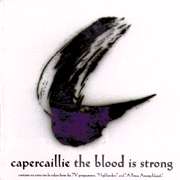 Having unbound
ambitions, they managed to pay for the recording of their first
record, Cascade, in 1984. It was ready in three days,
and, although it is not a record, it shows us what the true
budgetary health of the participants was in such early times. Cascade,
as could be expected, is strongly influenced by traditional
music, with brief sparks of what was to come.
Having unbound
ambitions, they managed to pay for the recording of their first
record, Cascade, in 1984. It was ready in three days,
and, although it is not a record, it shows us what the true
budgetary health of the participants was in such early times. Cascade,
as could be expected, is strongly influenced by traditional
music, with brief sparks of what was to come.
Their second album, in 1987, would be Crosswinds. It would coincide with the arrival of violinist Charlie McKerron and with their first overseas tours. Their visit to the American continent fully introduced them into the musical environment and the musical industries. Their new label, Green Linnet, would release Crosswinds and the next two records. This fact meant that they became somewhat better known, up to the point that the British Channel 4 asked them to prepare the soundtrack for the TV series The Blood is Strong. Together with their new bass John Saich, this work would be released in 1988. The record would receive an award and was re-released in 1995.
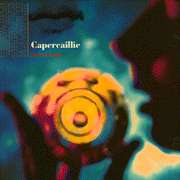 Yet the great
revolution was still to come. The best era of the band would
begin with the arrival this very same year of Mánus
Lunny (bouzouki and guitars), and with the release in
1989 of their fourth album, Sidewaulk. The contents of
this work, produced by Lunny's brother (Dónal),
continued to be traditional with imaginative contributions on the
part of the members, but lyrics in English began to be produced
as well, thus enlarging their perspectives. From that moment on,
they abandoned Green Linnet and began to record
for Survival, at their studios in Glasgow.
Yet the great
revolution was still to come. The best era of the band would
begin with the arrival this very same year of Mánus
Lunny (bouzouki and guitars), and with the release in
1989 of their fourth album, Sidewaulk. The contents of
this work, produced by Lunny's brother (Dónal),
continued to be traditional with imaginative contributions on the
part of the members, but lyrics in English began to be produced
as well, thus enlarging their perspectives. From that moment on,
they abandoned Green Linnet and began to record
for Survival, at their studios in Glasgow.
Perhaps it was in Delirium,
their next record, in 1991, where their expectations would be
fully confirmed: in it, new and very old themes are intermixed
with an almost unknown strength, an impulse that would take them
to the first place in the specialized lists. Maybe the best
explanation to all this, besides their talent, must be sought in
the 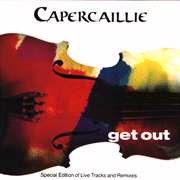 already mentioned theme, "Coisich a
ruin", used in a documentary called A Prince Among
Islands, in which Prince Charles appeared
promoting the Gaelic movement and that had a great following on
TV.
already mentioned theme, "Coisich a
ruin", used in a documentary called A Prince Among
Islands, in which Prince Charles appeared
promoting the Gaelic movement and that had a great following on
TV.
From then on, their live tours multiplied, as well as their collaborations and their tours overseas. Success had called to their doors, quality and not commerciality being the guarantee of their meteoric launch.
In 1992 appeared Get Out, spiced with a mixture of live themes and others from other albums. Wisely selected, the record reached high peaks in sales and extended its popularity even more. The release of a video covering a couple of concerts (Two Nights of Delirium) almost at once launched the phenomenon Capèrçaillie to the highest reaches ever.
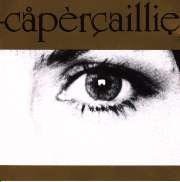 Later
on they would release Secret People, in 1993, and Capèrçaillie
(1994), the latter including new material and remixed themes or
new versions of the former. Both mark the point of maturity we
had referred to before, which has made them what they are today.
Their presence in the musical panorama already is remarkable, up
to the point that part of their music would be used in the famous
movie Rob Roy (whose soundtrack was released in 1995).
Later
on they would release Secret People, in 1993, and Capèrçaillie
(1994), the latter including new material and remixed themes or
new versions of the former. Both mark the point of maturity we
had referred to before, which has made them what they are today.
Their presence in the musical panorama already is remarkable, up
to the point that part of their music would be used in the famous
movie Rob Roy (whose soundtrack was released in 1995).
Their last record up till now is To the Moon. In it, a mature Capèrçaillie, who know what they do, once again show their talent and good work. It has been more than a decade of a constant evolution, of modelling their traditional past with those modern ingredients that have made of their music that for which no doubt they will be known in the future.
![]()
You can find more information about Capèrçaillie at: